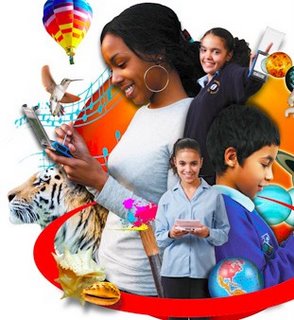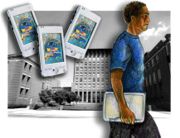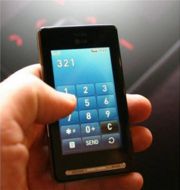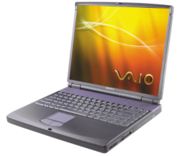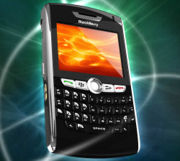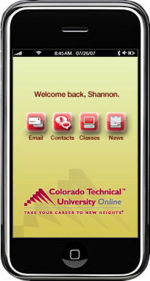User:Vtaylor/CIS2 Summer 2008/Mobile learning
| Students @ Work - a student collaborative writing project. Help us by providing feedback on the Discussion page. |
Contents
Mobile Learning
Introduction to Mobile Learning
Mobile learning holds many benefits that make it an effective teaching method. Class notes, lectures and assignments that are often given in class, can often be found online. Because classes are completely wireless, it is easier for students to communicate with teachers rather than being limited by the teacher's office hours.
In the past and today, many people (including educators and employers) have had disputes over whether or not mobile learning is a positive way of learning and expanding communication skills. While educators tend to lean towards mobile learning as being disruptive to their classrooms, and a form of approval toward students being able to cheat on exams, many researchers tend to feel differently. Mobile phones are made with on/off buttons and include a special feature known as “mute.” Additionally, while society tends to underestimate the intelligence of today’s students, it is a known fact that if a student intends on cheating on an exam, they will do so with or without the means of a mobile phone. While educators are mainly focusing on the negatives of mobile learning, what they are failing to acknowledge is the fact that it has taken years for computers to be implemented into their lesson plan. Why not use what students already have and turn it into a positive learning device?
Essentially, the average mobile phone contains almost as much information as a desktop computer. Although computers were invented in the United States, we are behind on the times as the United States and Canada are the only places where computers outnumber cell phones. Whether we like it or not, mobile learning is a reality of today and our future – we might as well go with the flow. According to “What Can You Learn From A Cell Phone? – Almost Anything!,” “there are 1.5 billion” cell phones world wide, and “half a billion new ones sold every year.” Instructors could use this to their advantage when assigning various projects, group work, and as a form of communication between students during after school hours. After all, according to ShareIdeas “mobile phones are by nature social devices.” Their overall intent is to strengthen and maintain our “social networks.” This should begin within our education system as well.By communicating and learning through mobile devices, it would not be an inconvenience to us as a society. According to ShareIdeas – Mobile Knowledge for Social Change, “there are three things people almost always carry with them: keys, wallet and mobile phone.” So, the fact that we would be communicating and learning through a device in which we already carry everyday exonerates the implication that it is not convenient and would be a disturbance. Unlike some researcher’s feelings, it has become apparent that most people want to be able to be reached; otherwise, they would not be carrying a mobile phone. While the average individual tends to feel “naked” when they forget their phone at home, researchers are arguing that mobile tools will diminish our communication skills. This appears to be very contradictive.
According to “Literacy Changes Lives,” “teenage girls interviewed reported noticing that their male counterparts ‘had become far more chatty and communicative since getting used to using mobile phone.’” They also believe that the average teenager “who would not normally write messages are often enthusiastic texters.” While most students are afraid to speak in front of the entire class, texting allows them to communicate efficiently and effectively without the anxiety. The possibility of students being more comfortable with speaking to people through texting may cause them to become more comfortable with their words in the future when speaking verbally in front of others.
The different types of mobile learning that exist are not limited to the academic side of learning. It is often used for training on jobs, as well as those who would like to learn for fun. Many mobile learning programs are focusing on people who are unable to attend traditional schools due to scheduling or transportation problems. One form of mobile learning is the use of mobile devices within a classroom. Even though the students and teachers are in the same location, it is still considered mobile learning, due to the use of mobile devices. Students use mobile devices in the classroom so they can collaborate with other students and then can take them home, so that they can continue their school work. "M-Learning.org" list other types of mobile learning; such as those that involve testing, surveys, job aids and just-in-time learning using mobile devices. A popular use of mobile learning today, is job training using mobile devices. Due to the fact that most professionals already have mobile devices, mobile learning seems to be an obvious choice. Professionals have busy schedules, which make mobile learning useful. It is not only beneficial for employees,but also for the employers that no longer have to pay for expensive classroom training. Today people have even created educational games that students can play on mobile devices. Another form of mobile learning is social-networking mobile learning. People can see the implementation of mobile learning when going to museums. Today a trip to a museum no longer requires a tour guide, because visitors can listen to hand-held or wearable technologies. These are only a few examples of the types of mobile learning that exists today and the number of uses are continuing to grow.
Definition
There are many definitions of Mobile Learning.
- John Traxler of the University of Wolverhampton says:
In defining mobile learning one confronts tensions between functionality and mobility. There is a continuum from the point of view of functionality in the devices used for e-learning and m-learning. This continuum goes from desktop computers to laptop computers to PDAs or handhelds or palmtops to smartphones to mobile phones. There are many, especially in the United States of America, who include laptop computers in their definition of mobile learning.
- Desmond Keegan of www.mlearn.org.za defines Mobile Learning as:
‘The provision of education and training on PDAs/palmtops/handhelds, smartphones and mobile phones.’
- M-Learning.org defines Mobline Learning in many different ways:
MyLearning author for Pocket PC Make your own rich-media mobile learning resources. Use a PC to connect your ideas, then let the author add best-practice interactions and mobile-ready installations to help move your ideas onto any Pocket PC-based PDA.
Pocket PC learning resourcesPocket PC learning resources Tailored games and quizzes created for Pocket PCs. Blended learning with paper-based materials, other ICTs, and with everything else you normally do!
Regardless of which definition one chooses to use, the basics are simple, it's learning and it's mobile.
Convenience
Students can learn with mobile learning at anytime and anywhere with one of the many m-Learning devices with access to internet and content. It reduces cultural and communication barriers between faculty and students by using a form of communication that many students are more familiar with. Because the information can be accessed through a PDA, a cell phone or laptop, the student is not forced to adhere to a strict schedule of class times and lectures. Instead, the student can study at his or her leisure. With this, the student is better able to pace the study to fit his or her needs and manage work time in accordance with his or her existing schedules.
Though many students would prefer to sit in the comforts of their home or read their lecture notes while enjoying coffee in a cafe, the convenience of mobile learning can become a danger. Students find that the lack of a schedule makes them lazier and more prone to procrastination. With no authority figure to actively remind the student to work, the student must create his or her own study plans and stick to them.
The mobile learning environment helps the student obtain educational degrees without attending any on-campus courses. Today, there are a lot of colleges and universities that offer degree programs online so that the students can study and obtain the degrees they want at their pace and convenience. The University of Phoenix is one example; they offer on-campus and online degree programs, certificate courses, and individual online classes. University of Phoenix degree programs are designed in collaboration with academic and industry professionals to ensure quality, relevance and rigor.
Difference with Traditional Methods of Learning
The main difference and the most obvious difference between mobile learning and traditional methods is the use of mobile devices. Mobile learning is often confused with e-learning and distance education. E-learning is the use of technology as the tool of instruction. Distance education is when people learn without having to attend class in person. Mobile learning, e-learning, and distance educational usually all use technology as a form of instruction. Traditional education schools do not utilize mobile devices as an instructional tool. Since, traditional education does not use mobile devices, the curriculum only focuses on knowledge of academic subjects as well as proper conduct. In addition to the traditional curriculum, mobile learning requires the curriculum to also include the students to know how to use mobile devices and technological conduct. Often people believe that the use of mobile devices can be distracting, but this is not always the case. Due to the fact that mobile devices could be distracting in a classroom, teachers may need to be more diligent with watching what the students are doing. It is convenient that students can take their learning information with them. With traditional learning, students many times have to carry heavy books, and school supplies with them. This makes it more difficult for students to bring their school work home with them and it may also hold students back from wanting to do their schoolwork. Mobile devices give students fewer excuses for not doing their schoolwork. The convenience of mobile learning is a major difference between the two methods. According to Ellen D. Wagner, the author of “Enabling Mobile Learning” traditional education has faced many problems in recent years, and mobile learning can be a solution to these problems. She said that we are in a technological age and it only makes sense to use these technological developments in our education system. Ellen Wagner believes that there will be little effort needed to implement mobile learning. She says that a positive difference between mobile learning and traditional learning is that it can bring together academia, the government, the nonprofit sector and businesses. The differences between mobile learning and traditional learning are positive and give more incentives for the use of mobile learning.
Devices
There are hundreds of devices that are used in mobile learning such as tablet PCs, Laptops, iPods, and any kind of mobile phone. The mobile phones, PDAs, and laptopsare the devices that have the greatest influence on Mobile Learning.
Mobile Phones
Mobile devices like cell phones are often banned in most classrooms, but a study shows that it might actually benefit learning. Cell phones have a major advantage over computers and laptops. They are small, extremely portable and cheap. Many cell phones today come with cameras with a good enough megapixel resolution to take notes and record lectures as videos. They can also connect to the internet and use web appliances as well. With cell phones becoming more and more sophisticated, their capacities can easily out strip that of laptops and may do so in the near future.
According to a study done in June 2005 on Mobile Phone Culture, by James Katz, Professor of Communication and Director at the Rutger University's Center for Mobile Communications Studies, there were approximately 200 million Americans who owned a mobile phone. The study also showed that people had spent over 675 billion minutes talking on mobile phones. These cell phones can be used to learn or discuss academic issues. Cell phone users can send text messages to each other to discuss an educational topic or connect to an internet server to download lessons from a professor in their class.
Laptops
In a 2005 U.C. Davis study of laptops users, more people are likely to purchase a laptop compared to a desktop. The main reason they chose to purchase a laptop is because it’s mobile. To most students, it is really useful. For example, at the Learning Center or Food Court of De Anza College, there are a lot of students who use laptops.
Benefits to Laptop Use
Using a laptop allows many students the same capabilities as a home desktop. While many laptops are not as powerful as desktops, they are versatile and portable. For the average student, laptops are able to run word processors and presentation programs like Microsoft's Word, Excel and Powerpoint. In most cases, these are all the programs a student really needs to use a laptop for. The portability of the laptop allows the student to visit cafes, restaurants or even relax in the fields while working on their latest assignments. Desktops computers cannot offer such mobility.
Drawbacks to Laptop Use
While students can type up their reports and essays on their laptops, there are a few drawbacks to laptops. First is their battery life. Many laptops have a battery life between 2-3 hours. High capacity cell batteries may increase the time to 3-4 hours. But without power, laptops become dead weight for the student to carry around. Second is the lack of wireless connections. Laptops can use wireless connections such as WiFi, but are often limited to WiFi hotspots. Moving too far from these hotspots can lead to slower connections or no service at all. The U.C. Davis study states:
"There doesn't appear to be one overwhelming factor. Physical infrastructure (power and small desks), security concerns, access to wireless networking, and printing access are the primary deterrents in bringing a laptop on campus. The most common need identified in these surveys was increased wireless coverage and wireless printing."
PDAs
PDAs are defined as Personal Digital Assistants which are designed to be as small as a mobile phone. PDA is a convenient device for students. Students can record the entire lecture and watch it again and again whenever and wherever they want. Students can also use PDAs to present projects, conduct research, process word documents and take notes in class. Students can store various tools on their PDAs such as e-books and assignments for classes, test review notes and more. Various colleges and universities have already implemented the use of a PDA into their teaching curriculum. Portland State University's Professor Jo Meyertons has written a small report discussing how to teach with PDAs.
PDAs are gaining in popularity but have yet to create a large movement toward them. To help in this movement, certain organizations and groups have formed to promote the use of PDAs in education. One group is the PEP, PDA Education Pioneers, who offer grants and PDA computers to teachers and students who are willing to teach and learn with them.
PodCasts
Believe it or not, Podcasts are becoming extremely popular at a surprisingly fast rate. iPods and MP3 players can store short quips and clips of the important ongoings of our society. From G4Tech's 30+ podcasts from game reviews, international online sensations to breaking news podcasts from media stations such as CNN and Fox to the hundreds of clips available on Apple's iTunes Podcasts there is no shortage of sources to get your daily dose of podcasts.
Teachers and professors may want to publish their lectures and notes in the form of podcasts so that students are able to learn using tools they feel comfortable with. Now an iPod video can be used to review lectures and an MP3 player can play back recorded notes for a test. MP3 players can also hold audio podcasts and a student can replay them at their leisure.
Pros and Cons
Pros
- Mobile learning provides convenience for students as well as professionals.
- Many of the applications are simple and easy to use.
- This technology matches the way the new generation is used to functioning.
- It allows students with different learning styles to be able to learn, because the many applications focus on a variety of styles.
- Following the green movement, it can limit the use of paper resources.
- Students can learn anywhere as long as they bring their mobile devices along.
- It can also be a useful in-classroom tool, used by both students and teachers.
- It prepares students for their future in the technology age.
- Professionals can use it for just-in time learning, to solve their on-the-site problems.
Mobile learning may be right for you for many reasons. Mobile learning gives each person the ability to learn from anywhere they choose. With the use of a laptop, PDA, cell phone, or hand-held games can stimulate the mind and keep you busy when you have some down time. This also provides information whenever you need it and literally the computer can answer all your questions just by surfing the web. Another reason mobile learning is for you is because you can stay in contact with friends and family whether you're at the beach, school, or in another country, the opportunities are limitless. Lightweight and easy portability allows you to study on the go. You're no longer restricted to going to a class room to sit down and take notes, the notes come with you. If you have a busy schedule, are not easily distracted, and self-motivated mobile learning may be right for you.
Cons
- The technology and devices used can become addictive.
- Using a device can lead to a lack of awareness of one's surroundings.
- Other applications of cell phones, PDAs and laptops can easily become a distraction.
- Focus on mobile devices may lead to a decrease in social interaction.
- Cell phones already have been the center of cheating controversies.
- Lack of traditional classes can encourage procrastination.
- Mobile learning is not a viable method of education for everyone.
Mobile learning is not right for everyone. If you wish to escape from the tech-world then mobile learning may not be for you. It often consumes peoples' lives and keeps them glued to their cell phones or smart phones constantly answering phone calls and text messages. Furthermore, having these devices gives people an excuse to not exercise and be consumed with their iPod, laptop or cell phone. As we know, mobile learning can be a major distraction in school and also at the workplace and home. With so many applications besides those used for education, it is easy to be distracted. Using laptops, one can get on the internet, waste time surfing the web or chatting, cell phones; with games and text messages, and iPods can be used more for listening to music rather than listening to the professor's recorded lectures. Work ethic depends a lot on the willingness of a student to follow study schedules on their own.
A major con of mobile learning is that it can be a very addicting technology. Many people rely on mobile learning and neglect to see their surroundings. Some people can never leave their cell phones, PDA’s or laptops which causes complications and problems within their own lives. Other cons of mobile learning may be that the devices can be disruptive or even a lack of social interaction. For example students who are text messaging and playing games during class are not only being disrespectful but also not efficiently learning since they are not paying attention to their teachers.
The Future
From the looks of the current trends in education; mobile, online and distance learning classes are becoming increasingly popular. However, due to the nature of these classes, student retention rates are low. This style of teaching will become more and more available as more mobile learning is able to reach a larger student base than traditional classes. More people farther away can participate and learn the material, and are no longer limited due to their location.
Mobile learning has good prospects when it is applied to countries with little to no internet access. Cell phones are able to connect to the web through satellite and are not limited by wires or cables. Countries in Africa are beginning to take advantage of mobile learning to bring education to places where it would normally be difficult. Being connected through mobile devices allows learners from anywhere to access the millions of pieces of information stored online.
However, it is impractical to attempt to offer every course as an online or mobile learning class. Certain branches of education, such as the sciences require lab work for a student to earn full credits. Lab work cannot be performed through a cell phone or PDA, even though simulations exist that might aid the students. The Merlot (Multimedia Educational Resource for Learning and Online Teaching) website hosts hundreds of simulations that may be useful for mobile learning purposes, but will not be enough to meet the requirements for laboratory work.
Today, mobile devices are just beginning to integrate into our society. Like any new development in technology, there are both good and bad effects on society. Following the changes in technology today, it makes sense that mobile devices will be used in one of the most important arenas in society, which is education. There are many pros of using mobile learning, and many of the negatives, that come along with them can be solved. The possibilities with the use of mobile learning seem endless. Mobile learning as a form of education that can enhance society as a whole, as well as make education more accessible to those whom traditional education was not before.
Project Plans
Objective
To illustrate the pros and cons of mobile learning through the analysis of various types of mobile learning courses, the devices in which we use, and how mobile learning effects our interaction with others.
Intro
- Define Mobile Learning
- Brief History of Mobile Learning
Subtopics
- What types of mobile learning exist?
- Differences between Mobile Learning and Traditional methods.
- Pros of mobile learning?
- Why Mobile Learning may be right for you!
- Cons of mobile learning?
- Why Mobile Learning is not right for you!
- Who would benefit most from Mobile Learning?
- How do students and teachers interact through mobile learning?
- What technology is used in mobile learning?
Summary
- What effects does mobile learning have on society?
- What are the prospects of mobile learning?
- Will this style of learning become dominant?
Important Questions
- Is mobile learning an effective educational tool?
- What effect does it have on society?
- How does mobile learning effect the way we interact with one another?
- Are we able to obtain the same information as we would in an on-site class?
- How will mobile learning effect the way in which we obtain degrees?
- Should all courses be available online?
- How much more convenient is mobile learning for the student?
Research Required
- Types of devices used in distance and mobile learning courses.
- How these devices have changed.
- Effect on human interaction through these devices.
Extra Info
- If you want to learn more about Mobile Learning, visit Ken Carroll's blog Here Comes Everybody.
- Educause Quarterly's report on the pros and cons of many of the devices used in mobile learning.
- The Kaleidoscope Report on the issues of Mobile Learning.
- The MERLOT website hosts hundreds of simulations that can be used to help teach through mobile learning.
References
- ShareIdeas.org – Mobile Knowledge for Social Change
- What Can You Learn From A Cell Phone? – Almost Anything! By Marc Prensky
- Literacy Changes Lives
- Ken Carroll's Here Comes Everybody
- Rhoadarian Blog Archives
- Dr. James E. Katz's Cell Phone Culture
- Website of Dr. James E. Katz
- Rutger's Center for Mobile Communications Studies
- De Anza College website
- U.C. Davis Student Survey of Laptop Users
- Portland State University website
- Professor Jo Meyerton's Teaching and Learning with PDAs
- mLearning World Conference Website
- Background information of John Traxler
- Desmond Keegan's Paper 'The Incorporation of Mobile Learning into Mainstreat Education and Training'
- Mike Sharple's slideshow on the History of Mobile Learning
- PDA Edudcation Pioneer's PDA Grant Website
- Mobile Learning's website on M-Learning
- Mobile Learning World's BlogSpot page
- Mobile Learning . Org
- Associated Content's article about Cell Phone Controversies
- Are You Ready for Mobile Learning? by EduCause.edu
- OnPoint's Cell Cast site
- Ellen D Wagner's "Enabling Mobile Learning"
- Touch Screen Mobile Phone
- bsu.edu
Project Roles
| Project Manager | Team Co-Ordinator | Recorder | Writers | Content Manager | Style Co-Ordinator | Tech Wiz | Reviewer | Editor |
|---|---|---|---|---|---|---|---|---|
| Yong Ra | Phoebe Ta | Yong Ra | Individual | Tuan Dinh, Phoebe Ta, Shih Hsuan | Tuan Dinh, Yong Ra | Tuan Dinh, Yong Ra, Shih Hsuan | Individual, Matthew Hawkins, Jamie Pewitt-Cardoso | Yong Ra |
